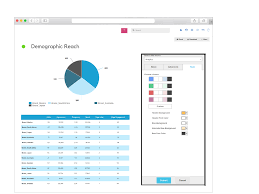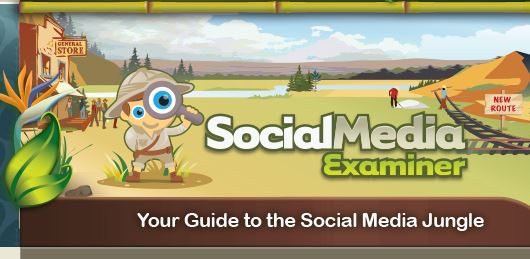
Content marketing is a key component of marketing a business online. Content marketing is used to build authority and increase SEO. You can also read our articles about building authority, SEO, backlinks, and marketing blogging to increase visitors. We also discuss the benefits of content marketing for businesses. In this article we will talk about the benefits of using content marketing and how you can get started.
Content marketing
Content marketing via blogging is very popular but many companies have not yet fully realized the benefits. Blogging has many advantages, but most companies are not using their blog to expand their product page. A blog should be used as an educational tool to engage the audience at different stages of their buyer's journey. Here are some tips to make your blog a success. Consider creating a series or related articles once you have started a blog to give more information about the products and services your company offers.
Building authority

Although many people think of blogging as the same thing, online branding is very different from building authority through blogging. Online branding is about generating more exposure for your brand. Building authority, however, means taking it to the next step. It is more than a blog and a social media account. You must establish a following while providing useful and authoritative content. These are three crucial elements that you must consider in order to build authority online.
Search engine optimization
Search engine optimization (or SEO) is an important component of marketing your website. The first step in determining relevance is to determine the title of your post. Google refers this "title tags" and typically it stops at 60 characters. Google measures this using pixel width. Recently, Google increased it to 600 pixels. A great headline should also contain the keyword that describes your blog. Google also measures your headline length in characters. Make sure it is concise and clear.
Creating backlinks
Developing backlinks when marketing your blog is important for a number of reasons. Your brand authority and domain authority will grow with the backlinks you get. They will also bring referral traffic to you website. It's not hard to build backlinks with relevant sources. Creating a content roundup is a great way to keep readers updated on the latest developments in your niche. As with all roundups, make sure to link back to the websites you mention. Guest posting offers a unique opportunity to display your industry knowledge and experiences and generate high quality backlinks.
Building a social network following

Everyday, social media users are increasing in number. Growing a strong social media following can help you increase exposure and grow your business. To build a loyal social audience, it is not enough to get likes on your page and followers. It is important to understand your target audience in order to create a strategy that focuses on their online behavior. Tens of thousands of likes isn't enough.
FAQ
Why is a Content Marketing Strategy necessary? Why should I not only send out emails, but also post social media updates.
There are two main reasons why you might not want to use a Content Marketing Strategy.
-
You might think that email marketing and social media posts are enough to get people talking about your brand.
-
If you haven't tried email marketing or posting on social media, you might assume that this type of content isn't practical.
Both assumptions are false.
Email marketing, as well as social media posts, can be excellent ways to communicate with prospects or customers. But they don't suffice by themselves.
Your goals can't be achieved by an email campaign. You need to integrate it with a larger strategy. And social media posts alone won't help you achieve your goals either. They should be part and parcel of an overall strategy.
This is where your Content Marketing Strategy comes in. You can control your entire content creation process by having a clear strategy.
As a result, you'll be able to spend more time focusing on other essential aspects of running your business, like growing your audience and increasing conversion rates.
A Content Marketing Strategy is a great tool, but it doesn't necessarily make it easy.
It is important to have a strategy.
Why should I do content marketing?
HubSpot says that the average person spends more than two hours a day on content consumption. That's a lot spent on content!
What if I post only links to other sites' content.
Yes! This is known as link building. Linking back to another site's content is a great way to increase traffic to your site. Links to credible sources should only be included.
What are the benefits to content marketing?
By creating high-quality content, content marketing can help drive sales leads and sales. Content marketing offers a steady supply of new, original content that can then be used to promote products or services. Content marketing is a great way to increase brand awareness and trust among potential customers. The best part about content marketing is that it creates a positive image and reputation for your company.
Content marketing is expensive.
It depends on the size of your business and what stage you're in. Small businesses often start without any dedicated resources. They realize, however that as they grow, a strong content marketing strategy will improve sales and customer engagement.
When you partner with a content marketing agency or freelance writer, you'll get access to a wide range of tools and expertise. These professionals can help you identify the problems and opportunities in your company to guide your content marketing plan.
A good content marketing strategy will give you enough money to cover production costs while allowing you to invest in other parts of your business.
Is a Content Marketing Strategy right for me?
If you already know your message, then a Content Marketing Strategy works perfectly.
Here are some questions to ask to get you started.
Do my company need to communicate a particular message? Or should I create content that appeals to a wider audience?
Are you more focused on generating leads, or converting visitors to buyers?
Do I want to promote one or more products?
Am I interested in reaching people outside of my industry?
A Content Marketing strategy will be the right choice if you answered yes to any of these questions.
Statistics
- Companies that use content marketing see approximately 30% higher growth rates than businesses not using it. (mailchimp.com)
- Seventy-two percent business to business (B2B) (mailchimp.com)
- Forty-seven percent of buyers view 3 to 5 pieces of content before engaging with a sales representative. (mailchimp.com)
- We found that 40% of businesses don't have a documented strategy yet. (semrush.com)
- An example of an overarching goal could be: "In 2022, we want to achieve a 20% increase in revenue created by organic content and generate 15,000 MQLs with a budget of $30,000." (semrush.com)
- According to our research, 65% of companies with very successful content marketing in 2021 ran content audits at least twice a year. (semrush.com)
- Out of the 1,500 marketers we surveyed for our State of Content Marketing report, 78% who felt their content marketing strategy was exceptionally effective in 2021 had documented their strategy. (semrush.com)
- Content marketing produces 3X more leads per dollar spent. Content marketing costs 62% less than traditional marketing. (criteo.com)
External Links
How To
Content Marketing Tips: Infographic Creation Tips
Infographics can be a great way to simplify complex concepts and make it easy to understand. You should use infographics to spread the message about content marketing.
For creating an infographic you'll need software such as Adobe Illustrator and Photoshop. You can use these programs to draw out different shapes and elements to represent your data, then add colors and fonts to make everything look nice. Once your design has been created, you can start uploading images from Unsplash/Pixabay to incorporate into it.
Looking at other infographics online can help you get ideas. If you want to show calories in certain foods, then you can take a picture or diagram of a food pyramid, and add pictures of the foods. You might also want to calculate how many calories are in soda pop. This can be done by taking a picture with a bottle of Coke.
Once you have created your infographic it is possible to share it via social media channels like Facebook, Twitter and Google+. This helps people who aren't familiar with the concept learn about it. Include hashtags if you plan to share your infographic via social media platforms. This will allow others to see what you're talking. Hashtags enable users to follow along in conversations related to specific topics.
If you decide to create an infographic, try making your posts shorter than usual. An average blog post is between 2000 and 5000 words, while an infographic takes 500 to 1000 words. This means you can easily convey more information with less space.
Remember that not all viewers can read small font sizes when designing an infographic. Make sure you use large enough fonts and don't rely too heavily on color for your graphics. Make sure all text is legible.
These are additional tips:
-
Choose an Infographic Template. There are many free templates available online and in printable formats. Canva and Piktochart are some of the most popular.
-
Create your Infographic. Use the template below to create your infographic. You can use any media that suits your audience. For example, creating an infographic about the best places to eat in Seattle might choose photos of local restaurants.
-
Add Text. After creating your infographic, add text with Microsoft Word, PowerPoint, and Canva.
-
Add Images. Your infographic can also include images. These images could be photos, charts, graphs or icons. If you want to add a picture, make sure it's relevant to your topic.
-
Make It Interactive. Interactive elements can include buttons, maps, or links. This will increase engagement with your audience.
-
Share. When you're done, share your infographic on social media sites like Facebook, Twitter, LinkedIn, Pinterest, and Instagram.
-
Measure. Measure. Are people clicking through to your website or not? Did they sign-up for your email address? What was their reaction when you showed them your infographic
-
Improve. Is there anything you can do to improve your infographic Are you able to do it better the next time?
-
Repeat. Repeat.